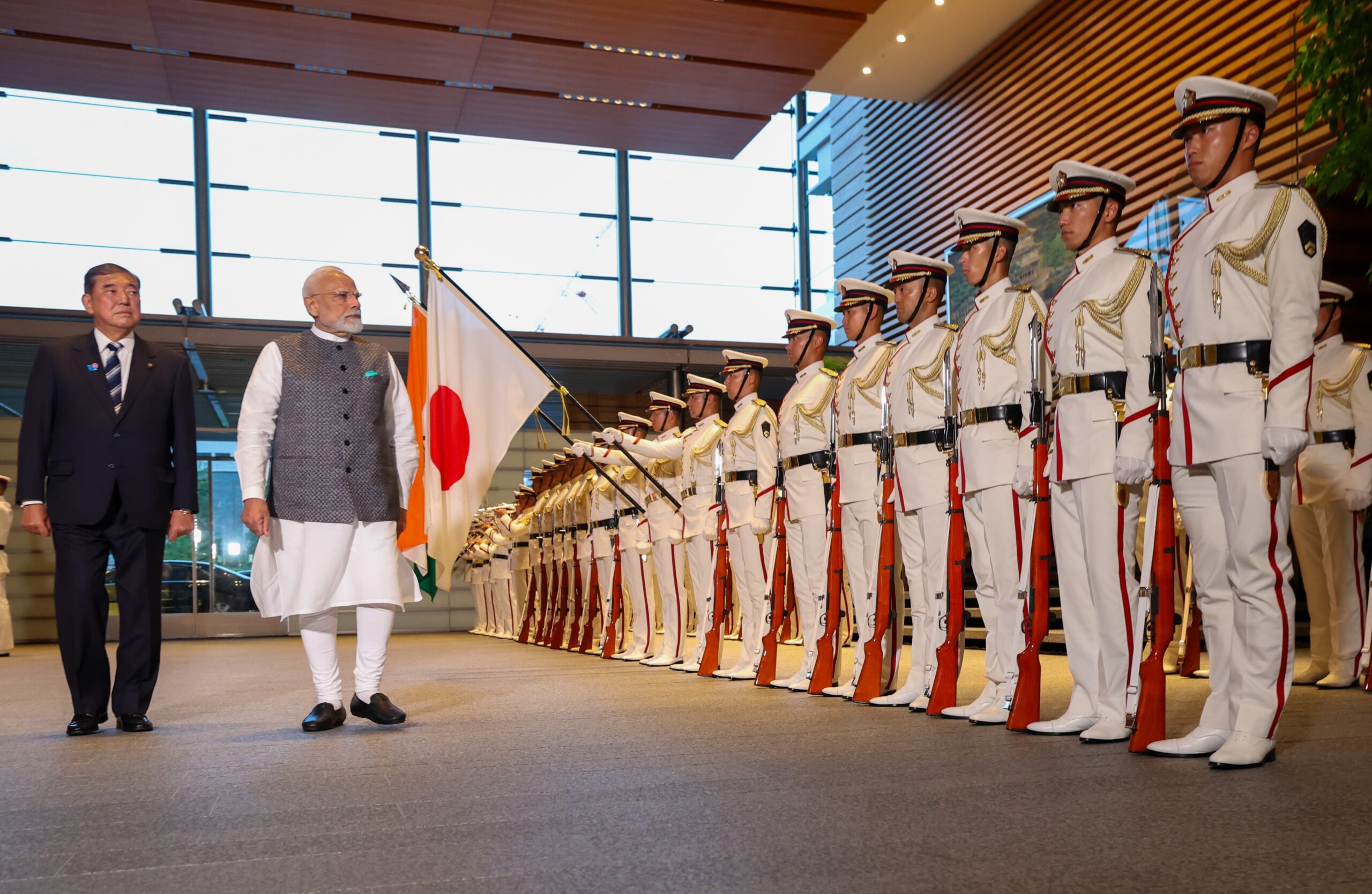India’s partnership with Japan signals a strong reply to China’s competitive Chang’e lunar programme.
Published Aug 30, 2025 | 3:59 PM ⚊ Updated Aug 30, 2025 | 3:59 PM

Prime Minister Narendra Modi with his Japanese counterpart Ishiba Shigeru.
Synopsis: Chandrayaan-5 serves as the latest testament to India’s growing prowess and vision in space science. Unlike its predecessors, this fifth edition is built on true international collaboration—melding ISRO’s proven lander technology with JAXA’s H3-24L heavy-lift rocket and a Japanese rover.
India’s aspirations among the stars reached a defining milestone on Friday, 29 August, as Prime Minister Narendra Modi in Tokyo announced an unprecedented collaborative venture: the Chandrayaan-5 Moon mission, forged in partnership with Japan’s JAXA (Japan Aerospace Exploration Agency).
With the formal accord between ISRO and JAXA, the Chandrayaan series not only steps forward technologically, but symbolically affirms Asia’s united resolve to shape humanity’s cosmic future.
Chandrayaan-5 serves as the latest testament to India’s growing prowess and vision in space science. Unlike its predecessors, this fifth edition is built on true international collaboration—melding ISRO’s proven lander technology with JAXA’s H3-24L heavy-lift rocket and a Japanese rover.
It integrates world-class scientific payloads: seven cutting-edge instruments, including a mass spectrometer from ESA (to study lunar gases and particles) and neutron spectrometers from NASA (for mapping water and hidden elements).
What sets Chandrayaan-5 apart is not just its technological ambition, but its focus on practical, world-changing science. Its objectives reach into lunar regolith drilling to gauge water content and composition, mapping subsurface ice, and studying the Moon’s far side—a region long veiled from Earth’s view and crucial for future lunar bases.
The Chandrayaan-5 mission resonates with India’s strategic future. As the nation’s space economy rockets toward a projected $44 billion in 2033—a fivefold leap from 2022’s $8.4 billion—the Moon becomes more than a destination.
It is a crucible for next-generation jobs, research, industries, and global leadership. Enhanced funding from New Delhi, including a 2025-26 Department of Space budget of ₹13,416.2 crore, and a ₹1,000 crore venture fund for startups, sets the stage for transformative technological growth.
The collaboration with Japan also synergizes innovation, moving ideas from “labs to launch pads”—spurring a knowledge exchange that sparks new materials, robotics, sensors, and data capabilities. This isn’t just government-to-government diplomacy: it’s the building of industrial ecosystems, with private companies and young entrepreneurs vital to India’s Viksit Bharat 2047 vision.
India’s partnership with Japan signals a strong reply to China’s competitive Chang’e lunar programme. China’s Chang’e 7 and 8—slated for 2026 and 2028-9, respectively, champion lunar south pole exploration and lunar construction tech, backed by a coalition spanning six countries.
China’s ambition for a permanent, crewed base by 2030 raises the stakes, making Chandrayaan-5 not merely a scientific feat, but a strategic statement of India’s aspirations for leadership and autonomy in the lunar domain.
The H3-24L launch vehicle, developed by Mitsubishi Heavy Industries and JAXA, represents the cutting edge in cost-efficient, high-capacity deep space launches—crucial for deploying both ISRO’s lander and Japan’s rover. Following financial greenlighting on 10 March, and detailed technical coordination meetings in Bengaluru this May, the mission’s hardware and science payloads are rapidly coalescing.
A 100-day primary operations plan (potentially extendable to a year) opens new windows for sustained lunar exploration, resource mapping, and far side geological surveys.
Exploring the Moon’s far side is not just a technological triumph, but a door to understand planetary evolution. Water mapping and regolith drilling promise insights crucial for future outposts and ISRU (In-Situ Resource Utilization)—the bedrock for lunar habitation, fuel manufacture, and interplanetary exploration. Spectrometric studies will reveal how lunar soils and ices vary across regions, directly informing site selection for future bases and science stations.
Chandrayaan-5 is far more than a launch or a payload—it marks India’s arrival as a co-architect of the modern space age. This mission powers new technology, energizes the economy, and inspires a generation. Its scientific quests may be lunar, but their ripples reach daily life—advancing communications, remote sensing, precision agriculture, and disaster response. As India and Japan look skyward together, their partnership lights the way for global cooperation—and for India’s bold, inclusive journey toward Viksit Bharat 2047.
(Edited by Majnu Babu).
